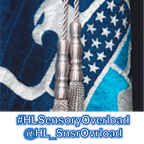Hi…this is your auto insurance company and your car tells us you’re a shitty driver — Now, about those premiums.
The Emergence of Driver Performance Monitoring
HLSensory Overload: We’re Everywhere You’re Going To Be
The sign on the back of commercial vehicles often reads “How am I driving, call 1–800–555–1212. Safety is our priority”. We could assume that the majority of calls, if not all, received on customer service lines such as this one contain a wide range of complaints, most of which probably pertain to the truck being in someone’s way, or rude behavior, but not likely true safety concerns. While the idea of providing a resource to report bad driving seems like a good one, it is truly subjective and could lead to unnecessary discipline for drivers. But, oh well…too bad for him. That’s what he gets for getting in my way. However…
What if your mother-in-law backseat driver was replaced by artificial intelligence?
Now you are the one that is being monitored every time you get behind the wheel, and your car is a 4,000 pound stool pigeon. Driver performance monitoring is the official term, which is also known as vehicle telematics, for the use of remote sensors that capture everything a driver does, which is also a known form of artificial intelligence. Today, subjective customer service experiences can be compared with empirical data to give a fuller picture of what a driver did — or didn’t do — at any given time, if equipped with this monitoring technology. Whether you feel you were going too fast for conditions or not, the sensors in the vehicle will get the last word.
Driver performance monitoring collects various sensor-information from a vehicle and then transmits the data to a server. The server then analyzes the data based on established standards for performance and then issues alerts or reports when variances are recognized. Controls such as speed, braking, how many “Gs” were pulled in the curves, force on the brakes, use of turn signals, horn activations, cameras (back up cameras), AVL/GPS data, etc. are all collected and coordinated, so that a virtual digital picture can be presented that illustrates the performance of the driver.
In the case of public safety personnel, other sensors such as dashboard and body cameras, use of emergency lights and sirens, activation of a shotgun/rifle release, or emergency assistance buttons can be included in the sensor data collection. Instant alerts can be sent when various actions occur altering supervisors to unusual activity, such as an emergency assistance button activation or release of a shotgun/rifle.
Driver monitoring systems can be an excellent tool for helping vehicle operators improve driving performance, evaluation of recognized problem operators, and identification of operational practices or situations that lead to variances in driving. Unfortunately, the collection of data can also be used against an individual and may prove difficult to contest unless specific policies and procedures are in place. These policies and procedures should reflect that this data alone should not be used for certain levels of discipline, such as termination.
Safety and efficiency are the core principles behind driver performance monitoring. The collection of data can enable a vehicle fleet manager to assess fuel consumption, evaluate the length of time vehicle brake pads need replacement, traffic impacts, and manufacturer defects.
You can have my data when you pry it from my cold, dead, oh, never mind.
The collection of sensory data is likely not something a driver will be able to avoid. Government and private-sector employee will be governed by their organization’s policies. These policies will recognize that the organization can legally collect and share data that protect their corporate / mission interests. The embedded manner of these sensors into the vehicle will be difficult for drivers to bypass and the drivers that no not follow these policies will be subject to discipline, which could possibly include termination.
Every-day drivers are not immune to data collection either. Many insurance companies and car rental service track driver performance as a mechanism to determine rates, risk, and to monitor driver performance in accordance with their rental agreement. Variances from what was specified in microscopic text in a fifteen-page electronic rental contract could prove costly in fees, damages, or premium rates to the customer. All new passenger vehicles are equipped with an Event Data Recorder, (EDR or “Black Box”), which records speed, brake use, seat belt use, airbag status and lateral acceleration of the vehicle. Theoretically the data belongs to the driver of the vehicle, but, depending on which state you live in, the data may be accessible by everyone from the police, to insurance companies, to lawyers who file for it.
Click here for a list of rules by state:
If you have opted for connected services like OnStar or Hyundai Blue Link, much of this same data is being systematically streamed in real-time back to a data center, along with your current position and speed, as well as other details, such as where and when you parked your car.
Now if they’d only come up with a way so your car could automatically narc on that jerk truck in front of you…
http://www.dailyrecord.co.uk/news/uk-world-news/watch-incredible-skills-ambulance-driver-5690073
